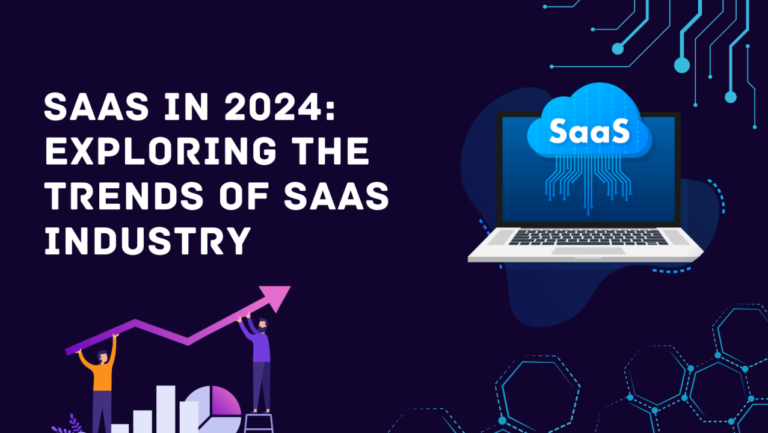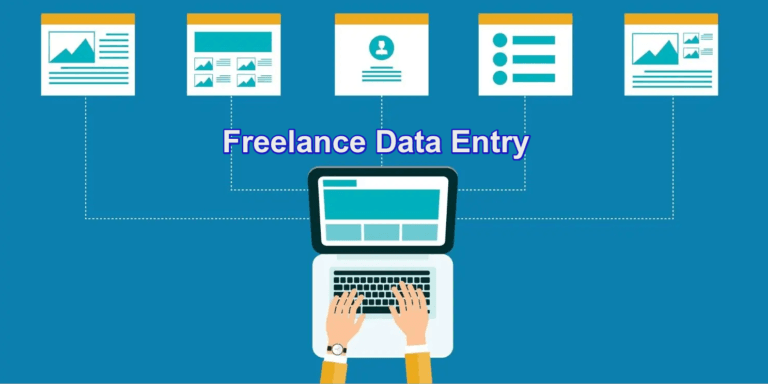In the vast universe of programming languages, Python shines as a radiant star, beckoning both novices and seasoned developers into its captivating orbit. Its allure lies not only in its simplicity and elegance but also in its power and versatility. If you’ve ever harbored the desire to tame this majestic beast, unlock its secrets, and wield its might, then allow me to be your guide on this transformative journey.
Embarking on the Python Odyssey
Imagine yourself standing at the threshold of a grand adventure, armed with nothing but your curiosity and a burning passion for knowledge. As you take your first steps into the realm of Python, you’re greeted by a landscape teeming with possibilities. The air is electric with the promise of discovery, and every line of code you write is a step closer to unraveling the mysteries of this enigmatic language.
Understanding Python’s Appeal
Python’s readability, adaptability, and simplicity are its main selling points. Python places a strong emphasis on code readability, which sets it apart from many other programming languages and makes it usable by both novice and expert developers. Because of its clear and simple syntax, programs are more efficient and easier to maintain because less code is required to convey complicated ideas. Furthermore, thanks to its enormous standard library and the large ecosystem of third-party packages, including web development, data analysis, machine learning, and more, Python offers solutions for a wide range of activities, including web development, data analysis, machine learning, and more.
Choosing Your Development Environment
To begin creating Python code, you must first configure your development environment. Python is compatible with your favorite operating system and is available for several platforms, such as Windows, macOS, and Linux. The official Python website offers downloads and installations, or you may utilize package managers like Anaconda or Miniconda, which are pre-installed with necessary scientific computing programs. Integrated development environments (IDEs) with capabilities like code completion, debugging, and version control integration, such as PyCharm, VS Code, or Jupyter Notebook, are another option if you want to optimize your coding process.
Introducing Yourself to Python Syntax
Python is a great language for beginners because of its simple, understandable grammar. In contrast to other programming languages, Python uses indentation to indicate the structure of the code, which improves readability and minimizes clutter. This unique feature promotes uniform formatting standards in Python projects, which promotes cooperation and maintainability. You’ll come across fundamental ideas like variables, data types, control structures, functions, and more as you become acquainted with Python syntax; these notions set the foundation for later, more complex subjects. Here’s a simple Python program that prints “Hello, World!” to the console:
print("Hello, World!")
Output: Hello, World!
The Foundations: Building Blocks of Mastery
At the heart of Python mastery lies a solid foundation built upon the bedrock of fundamental concepts. Like a master artisan crafting a masterpiece, you’ll begin by honing your skills in the art of syntax and semantics. You’ll learn to wield variables and data types like a seasoned swordsman, effortlessly manipulating strings, numbers, and lists with precision and finesse.
But mastery is not merely about memorizing syntax; it’s about understanding the underlying principles that govern the language. You’ll delve deep into the realm of control flow, mastering the arcane arts of conditional statements and looping constructs. With each passing lesson, you’ll feel the tendrils of comprehension weaving their way through your consciousness, illuminating the path to enlightenment. This section focuses on the fundamental concepts of Python programming, providing knowledge and skills to build robust and efficient programs.
Data Types and Variables
Variables and data types are fundamental to Python programming because they let you store and work with data inside of your scripts. Python is capable of handling several data types, such as:
- Integers: Whole numbers without decimal points, such as 1, 2, and 3.
- Floats: Numbers with decimal points, such as 3.14, 2.5, -0.5.
- Strings: Sequences of characters enclosed in single or double quotes, such as “hello”, ‘world’, “Python”.
- Booleans: True or False values representing logical expressions.
# Example of variable assignment
x = 10
name = "Alice"
is_student = True
It is essential to comprehend data kinds to carry out activities and make judgments within your applications. Additionally, Python has built-in methods for converting between various data types, giving you flexible data manipulation capabilities.
Control Flow Statements
With the help of control flow statements, you may regulate how your Python programs execute, enabling branching and iteration depending on predetermined criteria. Python allows for several control flow statements, such as:
- if…else statements: Execute a block of code if a condition is true, otherwise execute an alternative block of code.
- while loops: Repeat a block of code as long as a condition is true.
- for loops: Iterate over a sequence of elements, such as lists, tuples, or strings.
# Example of control flow statements
age = 25
if age >= 18:
print("You are an adult")
else:
print("You are a minor")
# Example of loop
for i in range(5):
print(i)
Control flow statements provide you flexibility and control over the behavior of your program by letting you make choices and iterate over data.
Functions
Functions are reusable code segments that carry out particular operations or tasks. They enable you to package functionality, which improves the modularity, maintainability, and readability of your code. The def keyword in Python allows you to define functions by passing in arguments and a block of code to run.
# Example of function definition
def greet(name):
return "Hello, " + name
# Example of function invocation
print(greet("Alice"))
You may design unique behaviors and encapsulate sophisticated logic within your applications by using functions, which can receive input arguments and produce output values.
Data Structures
Python comes with built-in data structures for handling and organizing data sets. Several often employed data structures consist of:
- Lists: Ordered collections of elements that can be indexed and modified.
- Tuples: Immutable collections of elements, often used for representing fixed sequences of data.
- Dictionaries: Key-value pairs that allow for efficient retrieval and manipulation of data based on keys.
- Sets: Unordered collections of unique elements, useful for performing set operations such as intersection, union, and difference.
How to Solve Algorithmic Problems in Python
Because of its ease of use and adaptability, Python has become the preferred language for software development. Python might be your go-to tool if you’re a novice attempting to master the fundamentals of programming or an experienced developer looking to simplify challenging jobs. This tutorial will focus on addressing algorithmic issues, which is a fundamental component of Python programming.
Algorithmic problems involve data manipulation or optimization and are solved by understanding the problem thoroughly. The first step is to identify inputs, expected outputs, and constraints. The second step is to design an algorithm, breaking down the problem into manageable parts and creating a solution.
Example: Solving a Sorting Problem
Let’s look at a simple algorithmic problem: sorting a list of numbers in ascending order. Here is a Python function that uses the Bubble Sort algorithm to solve this problem:
def bubble_sort(numbers):
for i in range(len(numbers)):
for j in range(len(numbers) - 1):
if numbers[j] > numbers[j + 1]:
numbers[j], numbers[j + 1] = numbers[j + 1], numbers[j]
return numbers
When nearby numbers are in the wrong order, the bubble_sort function continuously switches them to sort the list of numbers.
numbers = [5, 3, 8, 6, 7, 2]
sorted_numbers = bubble_sort(numbers)
print(sorted_numbers)
The code above creates a list of numbers, sorts it using the bubble_sort function, and then prints the sorted list.
Output: [2, 3, 5, 6, 7, 8]
Ascending the Summit: Advanced Techniques and Concepts
As your journey progresses, you’ll find yourself ascending ever higher, scaling the lofty peaks of Python prowess with determination and resolve. Along the way, you’ll encounter challenges and obstacles that will test your mettle but fear not, for every trial is an opportunity for growth.
You’ll explore the intricate nuances of object-oriented programming, unlocking the secrets of encapsulation, inheritance, and polymorphism. Like a master craftsman sculpting a masterpiece from raw marble, you’ll learn to craft elegant and efficient class hierarchies that encapsulate the essence of your designs.
Object-Oriented Programming (OOP)
Using the potent paradigm of object-oriented programming (OOP), you may represent real-world items as objects with distinct methods (functions) and characteristics (properties). Since Python is an object-oriented language, developing modular, maintainable, and scalable programs requires an understanding of OOP principles.
Objects and Classes
In Python, objects are instances of classes, while classes are blueprints for constructing objects. Classes let you structure your code into reusable components by encapsulating data and behavior. This is an illustration of how to define a class in Python:
class Car:
def __init__(self, make, model):
self.make = make
self.model = model
def drive(self):
print(f"Driving {self.make} {self.model}")
Inheritance and Polymorphism
By using inheritance, you may build new classes that inherit the properties and methods of older ones. Because of their same interface, objects of various classes may be treated interchangeably thanks to polymorphism. These capabilities let your Python scripts be more flexible and reuse code.
class ElectricCar(Car):
def __init__(self, make, model, battery_capacity):
super().__init__(make, model)
self.battery_capacity = battery_capacity
def drive(self):
print(f"Driving {self.make} {self.model} with electric power")
Functional Programming
Another programming paradigm that Python supports is functional programming, which emphasizes the usage of pure functions and immutable data. Writing clear, expressive, and maintainable code is made possible by functional programming approaches, especially in situations where data translation and manipulation are involved.
Higher-Order Functions
Higher-order functions are those that return functions as their result or accept additional functions as inputs. Higher-order functions are supported by Python, enabling the creation of closures, the implementation of functional programming patterns, and the composition of functions.
def apply_function(func, value):
return func(value)
def square(x):
return x * x
result = apply_function(square, 5)
print(result)
Output: 25
Lambda Operations
Lambda functions are short functions defined using the ‘lambda’ keyword. They are sometimes called anonymous functions. When performing actions on collections, lambda functions are frequently used with higher-order functions like ‘map’, ‘filter’, and ‘reduce’.
numbers = [1, 2, 3, 4, 5]
squared_numbers = list(map(lambda x: x * x, numbers))
print(squared_numbers)
Output: [1, 4, 9, 16, 25]
Asynchronous Programming
With asynchronous programming, you can develop non-blocking, concurrent code that lets your Python programs run numerous tasks at once without having to wait for each one to finish. Applications that are connected to the network and I/O can benefit greatly from asynchronous programming, which increases responsiveness and performance.
Await/Async Syntax
Async and await are keywords that Python introduced in version 3.5, giving programmers a syntax to define asynchronous functions and coroutines. The ability to pause and restart asynchronous functions allows for the effective use of system resources.
import asyncio
async def greet(name):
await asyncio.sleep(1)
print(f"Hello, {name}")
async def main():
await asyncio.gather(
greet("Alice"),
greet("Bob")
)
asyncio.run(main())
But Python mastery is not confined to the realm of objects and classes; it extends far beyond into the realm of advanced topics and cutting-edge techniques. You’ll delve into the mysteries of multithreading and concurrency, mastering the art of parallelism and synchronization. You’ll learn to wield the power of regular expressions like a sorcerer weaving spells of pattern matching and text manipulation.
The Quest for Knowledge: A Lifelong Journey
But let us remember that the path to mastery is not a destination but a journey, a never-ending quest for knowledge and understanding. As you stand atop the summit of Python prowess, gazing out across the vast expanse of possibilities that lie before you, remember that there is always more to learn, more challenges to conquer, and more horizons to explore.
Embracing Curiosity and Wonder
An unquenchable curiosity—an intrinsic drive to solve the puzzles of the cosmos and the intricacies of our surrounding world—lies at the core of the pursuit of knowledge. This interest pushes us to experiment with alternative ways, discover new ideas, and push the limits of what is possible in the world of Python programming. It inspires us to enquire, look for solutions, and go out on exploratory trips that result in more profound realizations and comprehension.
Cultivating a Growth Mindset
The development of a growth mindset—the conviction that one can overcome obstacles and attain mastery through hard work, persistence, and resilience—is essential to the pursuit of knowledge. This way of thinking inspires us to approach every new task with optimism and tenacity, to see hurdles as stepping stones to achievement, and to accept failure as a teaching opportunity in the field of Python programming. It serves as a reminder that every setback is just momentary and that, given enough time, energy, and commitment, we are capable of overcoming any challenge.
Navigating the Pathways of Learning
We find ourselves traversing a complicated web of roads when we begin out on our journey for knowledge, each with its own special set of obstacles to overcome and development chances. Numerous resources are accessible to assist us on our path, ranging from textbooks and documents to online tutorials and courses. We may learn new things, improve our abilities, and unearth informational gems that deepen our grasp of Python programming by traveling along these paths with an open mind and a spirit of exploration.
Connecting with the Community
A thriving network of fellow travelers provides support and friendship that no knowledge journey is complete without. Within the realm of Python programming, this community offers direction, camaraderie, and mentoring to those who seek it out. It is a source of inspiration, encouragement, and support. Through forums, meetings, and online groups, we can interact with other Python lovers to share experiences, share ideas, and learn from each other as we progress toward expertise.
Embracing the Journey
Ultimately, the pursuit of knowledge is about accepting the trip itself—the never-ending search for learning, development, and discovery that feeds our enthusiasm for Python programming—rather than about arriving at a destination or accomplishing a particular objective. We will have successes and failures, moments of clarity and uncertainty along the road, but no matter what, we’re going to keep going because of our curiosity, our tenacity, and the limitless opportunities that lay ahead.
So let this article serve as a beacon, guiding you on your quest for Python mastery. Let it ignite the flames of curiosity within you and fuel your hunger for knowledge. For in the world of programming, as in life itself, the journey is the destination, and the pursuit of mastery is its reward.
The Odyssey Continues
As we bring our journey to a close, let us reflect on the path we have traveled and the lessons we have learned. We have ventured into the depths of Python’s syntax and semantics, scaled the dizzying heights of object-oriented programming, and explored the uncharted territories of advanced topics and techniques.
But this is not the end of our odyssey; it is merely a waypoint on the road to mastery. The world of Python is vast and boundless, and there is always more to discover, more to learn, and more to achieve. So let us press onward, ever onward, fueled by the fire of curiosity and the desire for knowledge.
In the end, remember that Python mastery is not a destination but a journey, and the true joy lies not in reaching the summit but in the act of climbing. So embrace the challenge, savor the struggle, and revel in the pursuit of mastery, for therein lies the true essence of Pythonic enlightenment.
And so, dear reader, I bid you farewell on your journey, knowing that our paths may cross again in the vast and wondrous world of Python. Until then, may your code be elegant, your bugs few, and your thirst for knowledge unquenchable. Happy coding, and may the Pythonic forces be with you always. You can start your Python journey here: “Python beginner to advanced: A Comprehensive Guide“.








